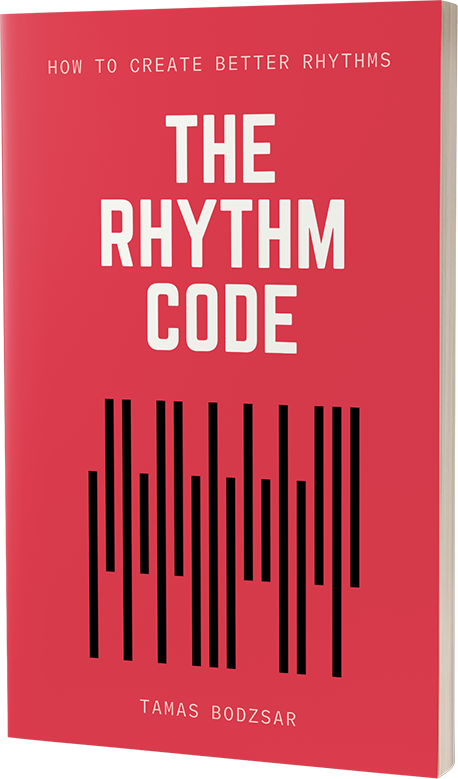
Salsa is a style that is originated in Cuba, but the first salsa bands really started in New York in the 1970s. Salsa is really a broad genre, and it can include many different elements of musical styles (even in one song) like classical music, jazz, funk, Cuban son, Brazilian samba, pop music, and many more. There are some very distinctive elements you need to use in order to create the salsa sound, but other than that, you can be extremely creative with it.
What instruments they use in Salsa
There are some instruments that create the salsa sound. Without these instruments, we can’t really say that it’s a salsa song, regardless of the rhythm. These instruments are the congas, cowbells, horns (especially trumpets), and piano. Of course, it’s not enough to use only these instruments, but without these, there is really no salsa sound. Other instruments in traditional salsa are the double bass (or bass guitar), timbales, guiro, clave, and of course, vocals.
While there is no drumset in traditional salsa, many modern salsa bands utilize the drumset, including the snare drum and the kick. Although, keep in mind that the drumset should be the quietest, and the congas and cowbells should be the loudest of the percussion group. If you listen to any salsa band with a drumset, you can realize that you can barely hear the snare and the kick drums in the mix.
Patterns
There are very distinctive patterns we can recognize in salsa. Especially in the bass, the piano, and the congas. But keep in mind that putting together a salsa song using only these patterns will make your song sound very generic and cheap. The salsa groove played by professional musicians is a little bit more nuanced than just playing patterns. The best way to learn how a real-life salsa groove sounds is by listening to salsa songs, and writing down what these instruments play exactly.
The piano
The piano probably plays the most distinctive groove in salsa which we call a montuno. Even if you don’t hear any other instruments only the piano, you can recognize that it’s salsa music. First of all, the piano is playing one chord tone in two or three octaves and fills out the rest of the bar with other chord tones. The octave sounds are a mix of downbeats and upbeats, but most of the time they are upbeats which makes a very syncopated groove. Notice how the G-major chord is anticipated.

This is a very traditional (and overused) salsa piano pattern example. But if you listen to modern salsa songs, you will realize that the piano groove is much more flexible, more unique, and somewhat improvisational. Using a simple pattern like this will only make your song sound amateur and generic.
The bass
The bass plays a pattern that we call a tumbao. This is also only a simple example of a traditional salsa bass groove, but again, the bass is also more unique and improvisational in modern salsa songs. Notice how there are no notes played on the first beat! This is one of the reasons it’s hard to play this style for many musicians.

The clave
If you read about salsa music anywhere, you will definitely read about the clave. But what is the clave? The truth is, the clave can mean three things. First of all, it’s a musical instrument. Two wooden sticks that you hit together to get a high-pitched percussive sound. Secondly, it’s a rhythm pattern of five notes. This rhythm pattern is traditionally played by the clave, but in modern salsa songs, they often play it on a plastic jam block. The clave rhythm has two sides, a bar “A” and a bar “B”. It can be started with either side. So there is a clave in 2-3 and a clave in 3-2. Here is the clave in 2-3:

The common confusion with the clave is that people think you need to play it in a salsa song. Not really. The clave can be present in the song even if nobody plays the rhythm itself. The clave can be the backbone of the groove. And that’s the third meaning of the clave. How is this possible? How can the clave be present while nobody plays it? This is when the Rhythm Code comes into the picture.
The Rhythm Code
When I started to learn about Cuban music, I have discovered a hidden system behind it. I call this hidden system the Rhythm Code. While the Rhythm Code can be found in all genres, salsa music is the one that utilizes it the most. Cubans developed the usage of this rhythm system to perfection. Even though they probably don’t realize it and they only use it instinctively.
Many people say that you need to “play on the clave” when you play (or arrange) salsa music. But the truth is, if you look at the clave itself, you won’t understand it. Because those five notes don’t explain what’s going on with the rhythm. This is why I call it a hidden system. The Rhythm Code however gives you a more precise and clearer answer. The Rhythm Code is very much connected to the clave, but it’s much more than that. It gives you a kind of formula of how you can create better rhythms.
Tempo
The tempo of a salsa song is very important, especially you want people to dance to your song. For musicians, it’s really exciting to play fast songs, but salsa is dance music, so we have to consider that this music is primarily for dancers. You can’t go below or above a certain tempo with the song because it won’t be danceable. In fact, since most dancers are not music experts, the tempo is more important for them than anything else. In my experience, this tempo should be somewhere between 175 and 200 bpm. The sweet spot is around 185 BPM. Most people who dance salsa are not professional but hobby dancers so they can’t dance too fast.
Of course, this number depends on how you measure tempo. I always notate music the simplest way, using mostly quarter and eighth notes, and I measure the bpm to the speed of the quarter notes. On the other hand, I noticed that some people measure the speed of the half notes, so when I say 200 bpm, they say 100 bpm. They are practically the same but measured in a different way.
Chord progression
For salsa music, you can really use any chord progression. What mostly determine the salsa style are the instrumentation and the groove. Everything else is up to you. You can use jazzy chord progressions if you prefer, and it will be still a salsa song if you use the right instrumentation and the right groove. Here is the chord progression of a Latin-jazz song called Dejame Sonar by Tito Puente:
Bbm7 – Ebm7 – F7 – Bbm7 – Eb7 – Ab7 – Dbmaj7 – Gbmaj7 – B7
You can use a chord progression of a traditional pop song that contains many chords, or you can just use four chords in the entire song like today’s pop songs. For example, in the song “Vivir Mi Vida” by Marc Anthony, they only use these four chords:
Cm – Ab – Eb – Bb
The structure of a Salsa song
Traditional salsa songs have a certain structure. The first part of the song is called the “cuerpo” (it means “body” in Spanish). This is where mainly the lead vocalist sings the verses and the band plays with very low energy. Then the second part of the song is where the background vocalist sings “coro” (choruses), taking turns with the lead vocalists who sing kind of improvisational motifs. Somewhere between, there is a part called “mambo”, where the horns have their parts. But the truth is, you can be really creative with the structure, there are no strict rules for this. Some salsa artists use song structures that more resemble today’s pop songs, for example, Marc Anthony is a good example of this.
The lyrics
The lyrics are the part of the songwriting process in which you can make a song sound really corny, especially in the Latin genre. There are hundreds of Latin songs that are using lyrics that are too cheesy, sentimental, and corny. And that’s probably the number one reason why many people hate Latin music. In my opinion, it’s better to avoid sentimental clichés, regardless of the genre. Don’t get me wrong, the topic of the lyric can be about romance, in fact, most songs still revolve around this topic. But HOW you present these ideas will determine the quality of the song.
What about the language? To be honest, it’s always weird to hear salsa songs in any other language than Spanish. We just identify this style with the Spanish language. English is OK, Italian is a maybe. But this is only my personal opinion.
The secret pattern behind successful songs
Get the eBook for $4.99

